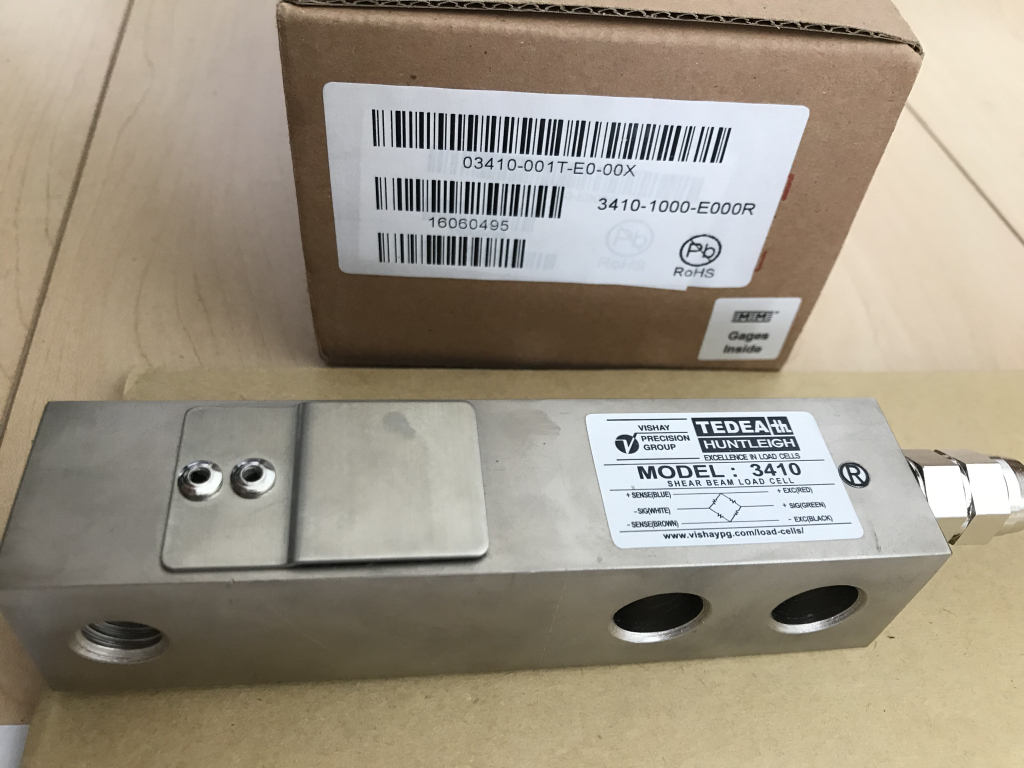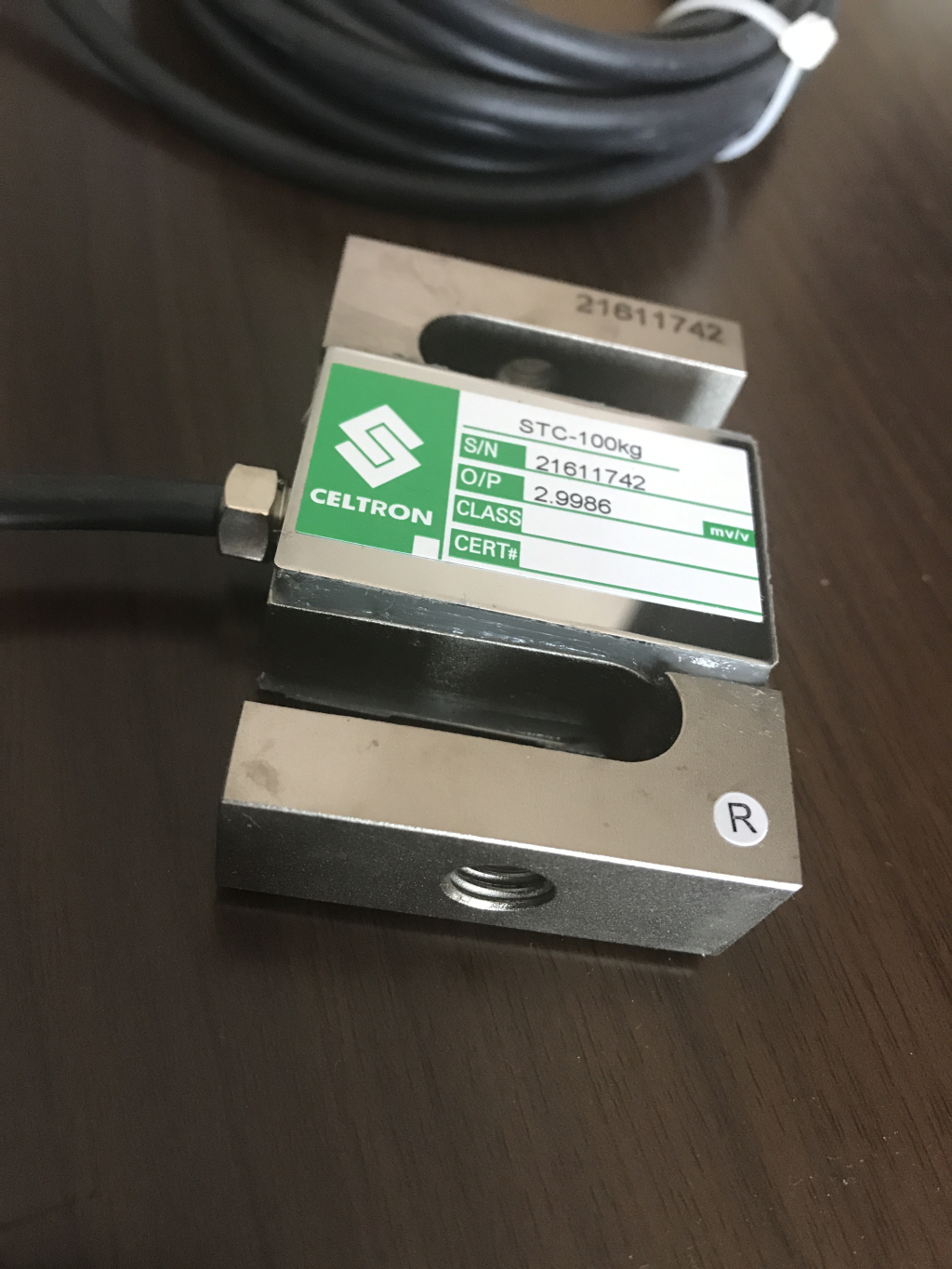push time:2023-06-26 Popularity: source:1
1、 Mixing station weighing sensor
A weighing sensor is a device that converts an object's mass signal into a measurable electrical signal output.
From the above definition, we can know that a weighing sensor is an electrical component through which we can measure the weight of the raw materials we need.
The most commonly used weighing sensors in general mixing plants are shear beam and S-shaped pull type, as shown in the following two figures.
Shear beam type weighing sensor
S-shaped pull type load cell
On the mixing plant, the measurement of aggregate, powder, and water is carried out using shear beam weighing sensors, while the S-shaped tensile weighing sensor is mainly used for weighing admixtures.
The working principles of both are similar. The sensor is equipped with an elastic element. If an external force acts on it, the elastic element will deform, and the resistor attached to it will also deform accordingly. The resistance value of the resistor will change accordingly. Through the change in resistance value, the current or voltage at the output end of the sensor will change. This process converts the weight of the object into an electrical signal, which is interpreted, Finally, it is displayed on the display screen, which is the weight value of the object we are weighing.
2、 Inspection method
Inspection method: When there are problems with inaccurate measurement or reading drift in a certain scale of the concrete mixing station's measuring system, the weighing instrument, junction box, and shielding cable faults should be first eliminated. After determining that the sensor fault is present, the following methods can be used to inspect the sensor:
1. Measure whether the edge impedance of the sensor exceeds the tolerance (the impedance between the sensor color line and the metal surface is 200MΩ, which is abnormal)
2. Measure whether the input and output impedances of the sensor exceed the tolerance. The output impedance is 350 amp; Plusmn; 1& Omega;, And input impedance>400& Omega; It is considered abnormal
3. Measure the voltage output of the sensor when the scale is empty or when the scale is full. When the scale is empty: > 2mV or 0mV are both abnormal. When the scale is full: > 20mV is considered abnormal.
4. Measure if there is an angular difference in the sensor. Sometimes the output of the measuring sensor cannot be fully determined, so it can be confirmed by measuring the angle difference. Place the same weight at each sensor support and check if the weight displayed on the instrument is consistent.
5. Measure whether the surface of the sensor is charged (color line to sensor surface). Prohibit surface electrification, as it will affect the service life.
3、 Fault cause
1. No weighing reading
This type of fault is generally common, where the weighing value of a certain scale is zero, regardless of whether there is something on the scale, its weighing value remains zero.
The reasons for the above fault are as follows: a, sensor damage, b, open circuit in the circuit, c, signal transmitter failure, d, poor contact of the junction box
a. Sensor damage: When detecting the presence of raw materials on the empty scale and the scale, the voltage value of the sensor output signal line is the same. If the two values are the same, it indicates that the sensor has been damaged. If there is a significant difference between the two values, it indicates that the sensor is working normally. According to the diagram below, the output signal of the sensor is detected. The working principle and boundary method of different brands of sensors are roughly the same. The diagram below shows the wiring principle of a 6-wire sensor.
b. There is a short circuit in the circuit: If the sensor is not damaged, the next step is to check if there is an open circuit in the circuit. The method is to follow the sensor circuit all the way to see if there are any signs of skin damage or cutting in the circuit.
c. Signal transmitter failure: After eliminating the above two reasons, we will finally check the signal transmitter. Its detection method is similar to that of a sensor, detecting whether there is a voltage signal in its output signal and whether its value changes when the weight changes.
d. Poor contact of the junction box: This is mainly caused by not firmly connecting the wire ends during wiring.
2. The weighing value fluctuates up and down
This phenomenon is specifically manifested as the weight value of a certain scale fluctuating up and down, and exceeding the normal error range.
Main reasons: a. There is significant mechanical vibration near the sensor, b. There are high-frequency signal transmission devices near the mixing station (including mobile signal towers and ultra-high voltage substations)
If the material bin attached to the sensor mounting base is subjected to significant mechanical vibration, it will cause the deformation of the sensor to constantly change. Therefore, the weight value measured will fluctuate up and down.
As for the issue of signal interference near the mixing plant, it is important to choose a reasonable construction site and stay away from these interference sources in the early stages of station construction.
4、 System maintenance
Weighing sensors are precision electrical components that need to be kept away from dust, water, and other substances. It is necessary to keep the surrounding area clean, so protective covers can be added to the sensors. The weighing system needs to be recalibrated at regular intervals.
When checking for faults in the weighing system, it is best to use a troubleshooting method to minimize the root cause of the problem.
Sales hotline:
Miss Chen: 18520271262
Miss Xie: 18688494254
Mr. Huang: 18688492451
Working hours:
Monday to Saturday9:0018:00
